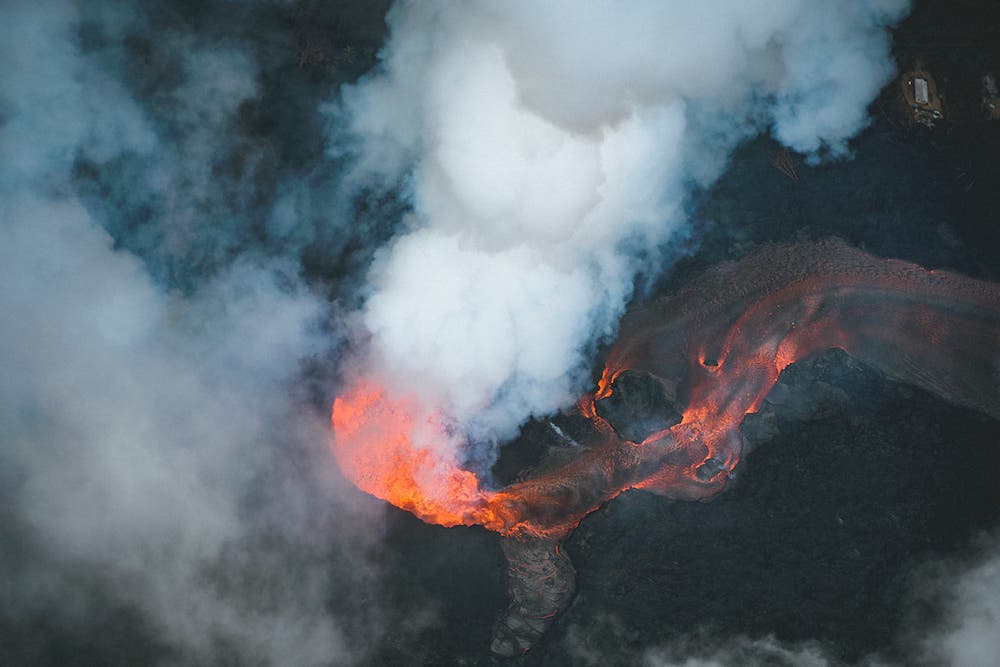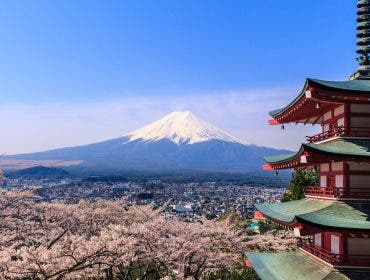Have you ever photographed a place that has 11 climate zones and whose name is a perfect description of what it is? I just got back from a recent trip to the Big Island of Hawaii and it truly blew me away. The youngest of the Hawaiian Islands is sometimes overlooked by tourists enthralled by Maui and Oahu, and because of the recentlava flow on the island, the media’s negative reports have caused more people to miss out on this beautiful place that is literally growing and forming everyday. It’s a photographer’s paradise, but it’s easy to get lost in all the options you can shoot. So here are five things you should go see and do to get the best photos on the Big Island.
1. Rainbow Falls

Yes, it’s touristy during the day, but that’s for a good reason. This beautiful waterfall was formed from a lava tube that is now inactive, leaving a large natural basin that the river flows over and into. And because of the position of the river and the falls, the waterfall can reflect the sunlight and form rainbows in the morning light.
The area is incredibly lush and green, and covers the riverbanks with a canopy that adds texture and depth to your shot. There are no accessible trails to the bottom of the basin and falls, and don’t try to make your own path either. The jungle floor quickly and steeply gives way, and if you aren’t careful, you could fall over a hundred feet to the bottom below. So stay above, go early in the morning, and get an amazing shot of an iconic waterfall. It also doesn’t hurt that it’s right in the center of Hilo, which makes it easily accessible and quick to shoot.
2. Akaka Falls

Located around 20 minutes north of the town of Hilo in Akaka Falls State Park, this beautiful waterfall is another quick trip, as there are no accessible routes to the bottom. Falling over 300 feet into the valley below, and framed by rows of ferns and other vegetation, this waterfall is beautiful to shoot. The small state park it resides in is also incredibly picturesque, and the well-maintained trail and boardwalk through the jungle are lined with trees that appear to be out of a Hollywood movie set.
However, this is another crowded spot because of the accessibility and beauty of the falls, so go early, and bring $5 for the parking and entrance fee to the state park. It’s a small fee for an incredible place that is quintessential Hawaii.
3. The Waipi’o Valley

This is probably my favorite part of the Big Island, and for good reason. The Waipi’o Valley is surrounded by mountainsides that tower thousands of feet above, forming the base of Mauna Kea, which rises to almost 14,000 feet above sea level. Because of volcanic eruption that took place many years ago, the Waipi’o Valley was formed, and it cuts deeply into the landscape, creating a tropical oasis that is simply magical to photograph and explore. Trails and the access road lead to black sand beaches that are isolated and teeming with sea life. You can even scamper across the rocky shoreline to get to a small waterfall that cascades into the ocean.
However, my favorite part of the valley lies back against the walls that begin up Mauna Kea. Thousands of years ago, seismic activity also rerouted the river above, which created waterfalls that tower over 1,500 feet high and cascade down into the valley, forming the river outlet that goes into the sea. These powerful waterfalls, like Hi’ilawe Falls, can be safely viewed from the valley, or if you’re feeling brave, you can journey up the river to where the base of these waterfalls lie.

But I want to offer a warning about this waterfall trek. This area is incredibly sacred and protected by the farmers and inhabitants of the Waipi’o Valley. If you choose to journey to Hi’ilawe, you must go up the river and take care to not disrupt or trespass on land that is private. To add to the difficulty of the route, this river not easy to navigate. The current moves fast and the water level rose to my neck in spots, which made me incredibly nervous carrying a backpack full of camera gear that I had to hoist over my head, leaving me susceptible to falling since my hands weren’t free, and I couldn’t see the bottom of the river. The end result was beyond worth it, but I just want people to understand the risk before they wander up the Waipi’o Valley river. It takes serious patience, route finding skills, and stamina to get to Hi’ilawe Falls, and you need several hours to go a round trip distance of around 3 miles, but it will lead to one of the most breathtaking waterfalls on the planet.
Oh, and a final piece of advice for the Waipi’o Valley. To get down to the valley floor, you must have a 4×4 vehicle. The Waipi’o Valley Road is one of the steepest in the world, and while it is paved, it has sections that drop to a 25 percent grade that makes it treacherous for vehicles with low clearance and no off-road capability. If you do forget to bring your Jeep, you can walk down…but I don’t recommend it, because the walk back up is a serious calf-burner.
4. The Pololū Valley

This beautiful area of the island is located on the opposite side of the Waipi’o Valley, and is on the northernmost section of the Big Island. The Pololu Valley Lookout is a beautiful sunrise spot, and on a clear day, the sea cliffs light up from the early morning glow. You can also take a hiking trail down to a secluded coastline that is beautiful to shoot. This area is also home to some of the tallest waterfalls, not just on the Hawaii Islands, but in the world. However, the only way to access them is from the air, which leads me to my final point.
5. A helicopter tour of the entire island

This is by far the best way to photograph the Big Island. Helicopter tours provide an up-close-and-personal view from above that is truly special and offers a plethora of opportunities to shoot. There’s nothing like hovering above a 2,000 foot waterfall and snapping away, frame after frame. The shots you will get will blow your mind, because everything looks better from the air. You get a bird’s-eye-view that showcases the scale of the Big Island.
I was lucky enough to take a tour of the entire Big Island, and I experienced everything from historic lava flow, to valleys lined with 2,000-foot waterfalls, and rugged volcanic coastline that took my breath away. The tour exceeded my expectations, and if I hadn’t gone one, I don’t think I would have appreciated the Big Island as much as I do now. It offers a unique perspective that is unlike anything else in the world.

The Big Island, like all the Hawaiian Islands, is incredibly special. However, don’t let the fact that tourists overlook this place make you not want to visit. It is full of opportunity for commercial, landscape, and portrait photography, and offers a sense of adventure in the midst of luxury and family vacations. I highly recommend a trip to this island, and I hope you get to experience some of these magical places on the Big Island like I did. Don’t overlook it simply because of the media reports. Do your research, talk to local authorities and businesses, and determine whether it is safe to travel and photograph. If it is, book your next flight to the Big Island for an experience you will never forget.






